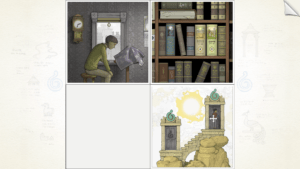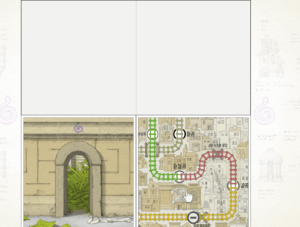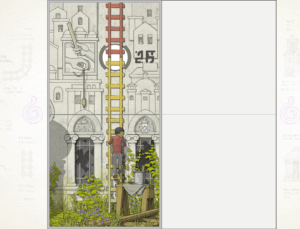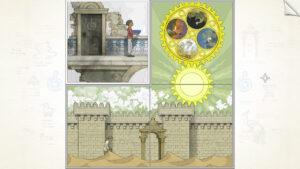For my critical play, I played Gorogoa, a puzzle video game developed by Jason Roberts and published by Annapurna Interactive. The game was initially released for Microsoft Windows, Nintendo Switch, and iOS. It’s suitable for all age ranges, but the puzzles can be pretty complex. In Gorogoa, the player interacts with pictures on a 2×2 grid in order to solve puzzles that lead them to the next part in the story. The puzzle mechanics in the game require simple controls but instead emphasize complex visual puzzle-piecing, which results in a captivating visual journey for the player.
The actual controls in Gorogoa are fairly simple. There are a maximum of four scene cards on the 2×2 grid at a time and you can click buttons to zoom in, zoom out, or move within a specific card, and you can drag to change the positioning of the cards. You can also drag cards to stack them on top of one another or reveal multiple cards within a stack.

These are the only mechanics that the puzzles in the game require. There also aren’t any puzzles in the game that rely on reaction speed or memory (by this, I mean that although memory can help you navigate quicker at certain points, there are no puzzles that rely solely on memorizing symbols, codes, etc.). Since the overall mechanics of the game are simple, the visual complexity takes the forefront. The game makes you switch between perspectives, combine visual elements on different cards, and explore different visual positioning in order to progress through each puzzle and through the narrative. For instance, one part in the game that I thought was really cool was when you had to utilize a railroad to ride a train, and then you shift the perspective of the railroad tracks to instead use it as a ladder later on.


Since the game emphasizes visual and perceptual complexity, I felt like I was piecing together the story myself rather than having the story told to me. This interactivity and sense of agency allowed me to immerse myself in a sense of exploration and discovery, synthesizing seemingly unrelated scenes together to reveal even deeper paths in the story. I liked how each card represented one part of a larger story, so that part of the puzzle was also piecing together the different sequence of events as we journeyed through them. This visual emphasis of the game was further enhanced by the level of detail in the illustrations. I liked how the visual details played into the puzzle-solving aspects as well. For instance, I would often have to zoom into tiny details in a specific scene and then utilize that shift in perspective to piece together multiple scenes. In this portion, for example, I had to line up the sun in one scene with a gear in another scene.

Overall, Gorogoa’s simple mechanics and visual complexity place a unique emphasis on visual literacy. Players must interpret visual cues and think creatively about how visual elements relate to one another, which encourages problem-solving in an engaging and creative way.



